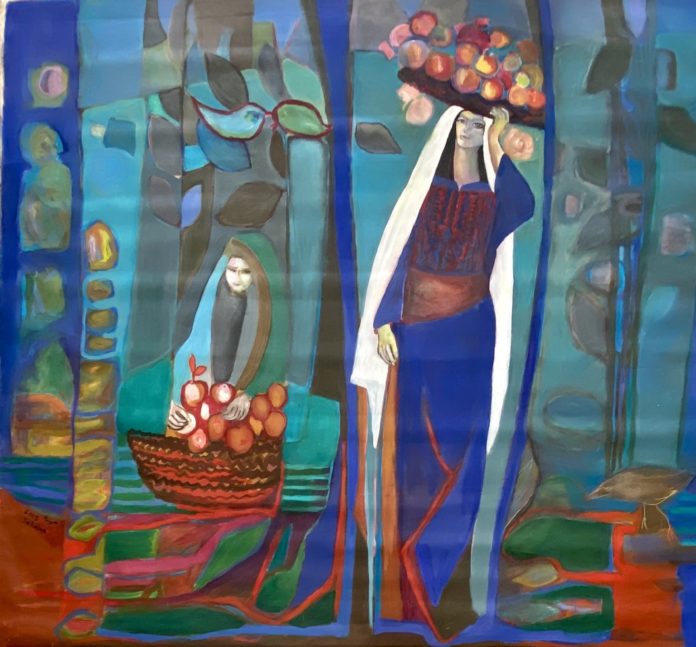Margaret Olin
Since its opening two years ago, the Palestine Museum US, in Woodbridge, Connecticut, just outside New Haven, has given ample space to women artists. The prominent artist Samia Halaby, for example, has supported this remarkable institution from the beginning with loans of her paintings, and an exhibition of her searing drawings of the Kafir Qasim massacre is planned.
Halaby’s large abstract paintings will be shown along with paintings, drawings, sculptures and textiles from 49 other female Palestinian artists from the Palestinian homeland and far flung places in the Diaspora from five continents in a massive exhibition of more than 150 works. “Telling the Palestinian Story,” which opens on March 8, will be the first curated exhibition the museum has mounted, and it is an opportunity to interrogate directly the very concepts of Palestinian identity that the museum was formed to express.
The works in the exhibition range widely in subject and style. Halaby’s abstract works represent one pole. Coming upon her works, and the figural, expressionist works of a Reem Natsheh, of Hebron, one might not immediately take them for Palestinian paintings. Highly skilled and engrossing, both represent the goals of the founding director of the museum, Faisal Saleh, to show that Palestinians are “like anyone else.” That is, like any community, they have capable artists interested in universal human problems and interests and can use their art to investigate the limits and the possibilities of color, line, and composition as well or better than any other artist. Saleh wants to impress on a skeptical world the fact, which should be obvious to everyone, that Palestinians are human, and that, as a corollary, that they deserve human rights.
Discernable in many of the works, however, is a tendency to use art to explore and express a specific Palestinian identity. Aside from contemporary themes — the apartheid wall, or the March of Return in Gaza, for example, as well as current Palestinian heroes, martyrs and the use of Palestinian symbols and the flag, we encounter among the works numerous cityscapes of a uniquely Palestinian Jerusalem that is imagined, lost or in peril, and figures of Palestinian women.
While portrayed in many different styles, colors, sizes and arrangements, the women are recognizable from costumes and hairstyles, gestures, shapes and features that have become iconic in Palestinian art. Oranges, baskets and the market in Jaffa are depicted nostalgically but gracefully with such figures, for example in the work of Juhaina Habibi Kandalaft, from Nazareth. The figures of women are colorfully attired but are often, perhaps unsurprisingly, isolated or among themselves in the absence of men.








